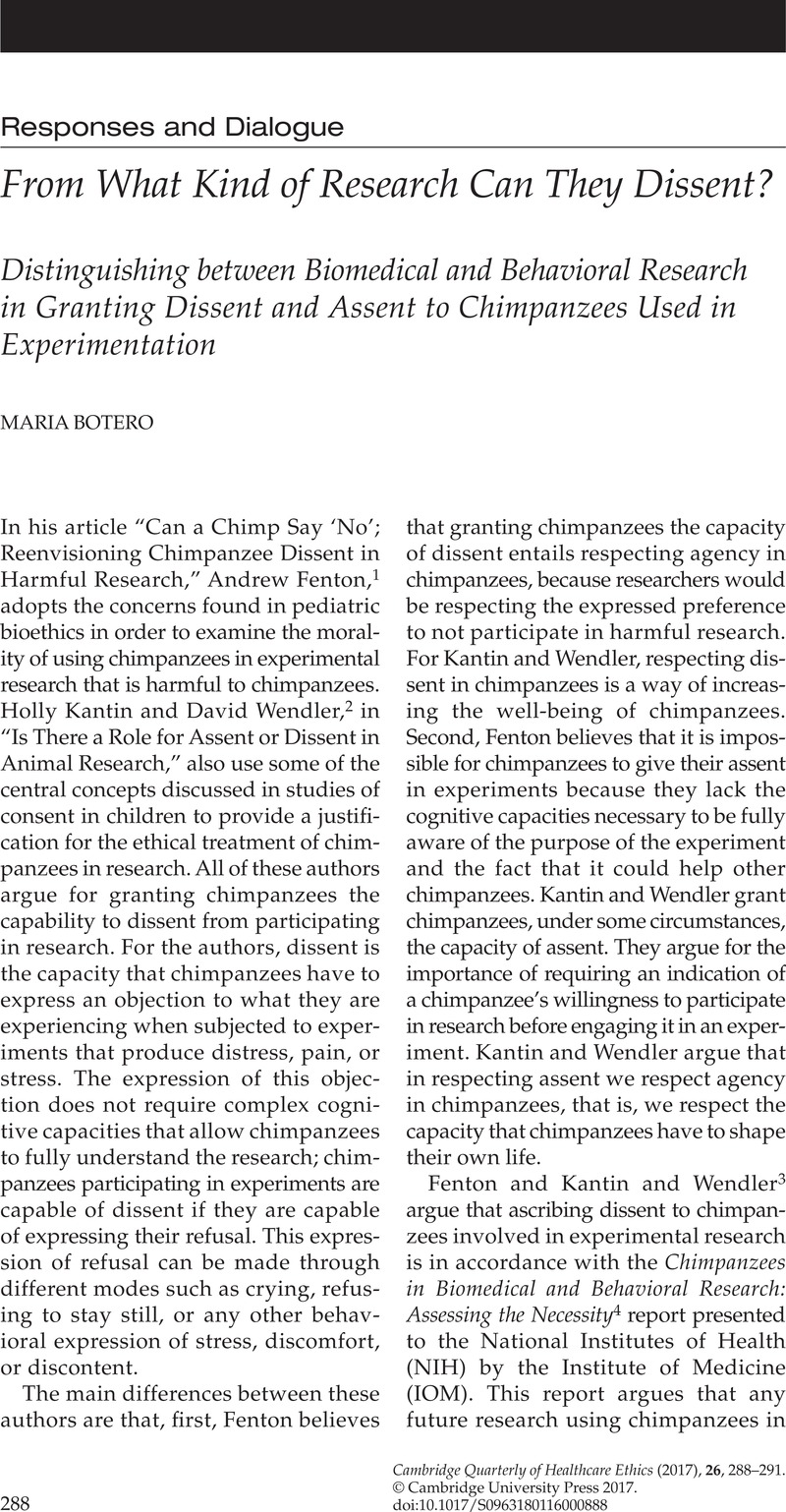No CrossRef data available.
Distinguishing between Biomedical and Behavioral Research in Granting Dissent and Assent to Chimpanzees Used in Experimentation
Published online by Cambridge University Press: 31 March 2017

1. Fenton, A. Can a chimp say ‘no’? Reenvisioning chimpanzee dissent in harmful research. Cambridge Quarterly of Healthcare Ethics 2014;23:130–9.CrossRefGoogle Scholar
2. Kantin, H, Wendler, D. Is there a role for assent or dissent in animal research? Cambridge Quarterly of Healthcare Ethics 2015;24:459–72.CrossRefGoogle Scholar
3. See note 1, Fenton 2014, at 135; note 2, Kantin, Wendler 2015, at 459–60.
4. Institute of Medicine (IOM). Chimpanzees in Biomedical and Behavioral Research: Assessing the Necessity. Washington, DC: The National Academies Press; 2011.
5. See note 4, IOM 2011, at 34.
6. Beauchamp TL, Ferdowsian HR, Gluck JP. Where are we in the justification of research involving chimpanzees? Kennedy Institute of Ethics Journal 2012;3:211–42.
7. Council of Councils working Group (CoC). Council of Councils Working Group on the Use of Chimpanzees in NIH-Supported Research, 2013; available at https://dpcpsi.nih.gov/sites/default/files/FNL_Report_WG_Chimpanzees_0.pdf (last accessed 1 July 2016).
8. See note 7, CoC 2013, at 41. The CoC also argues for eliminating this distinction because it entails a potential dichotomy between mental functioning and functioning components outside the central nervous system.
9. See note 7, CoC 2013, at 24.
10. King B. Retirement home or research lab? Report weighs fate Of U.S. chimpanzees. NPR Blogs, December 15, 2011; available at http://www.npr.org/sections/13.7/2011/12/15/143735486/retirement-home-or-research-lab-report-weighs-fate-of-u-s-chimpanzees (Last accessed 20 June 2016).
11. See note 6, Beauchamp et al. 2012.
12. See note 2, Kantin, Wendler 2015, at 468.